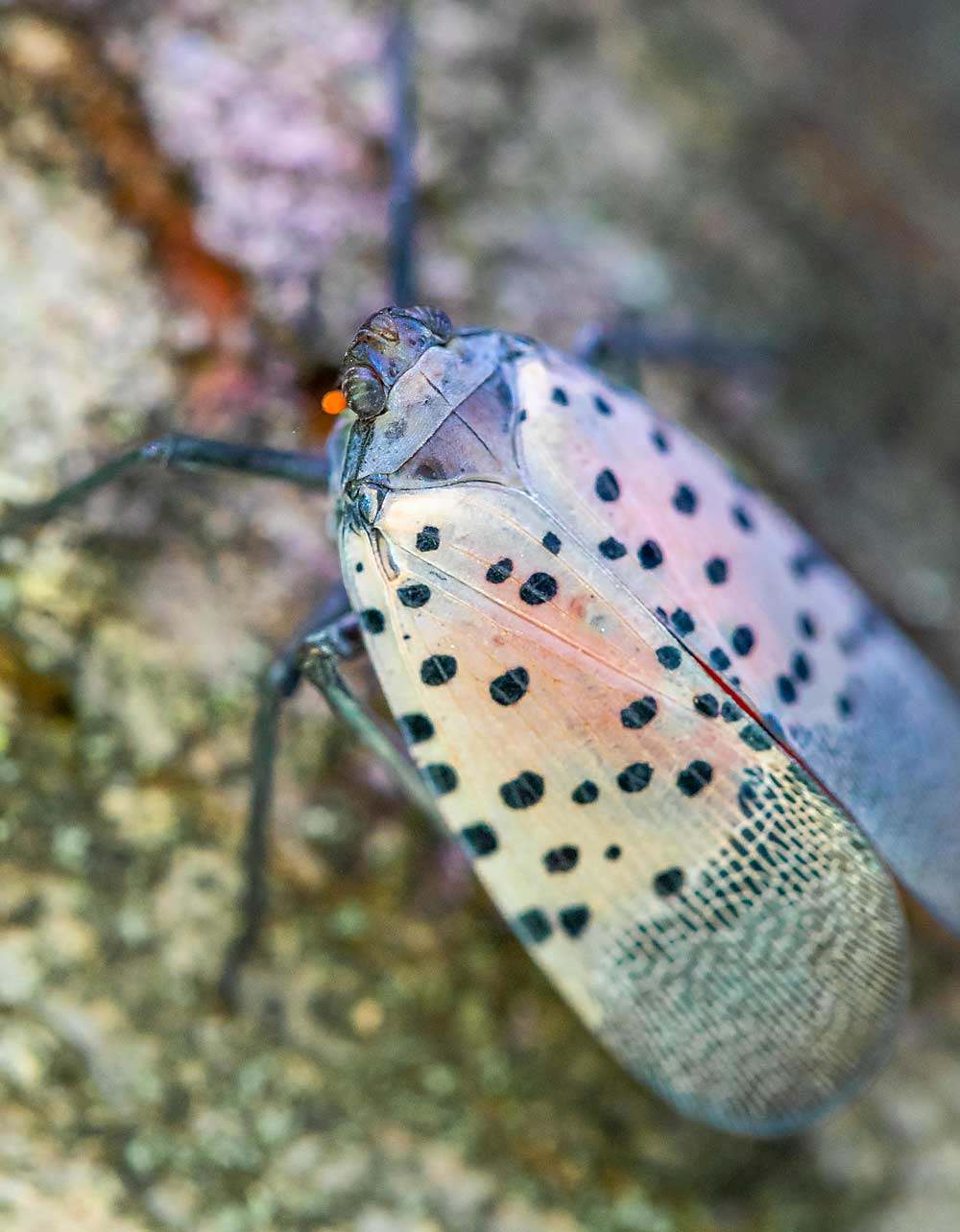
For the first time, spotted lanternfly has been detected in Michigan.
According to a Michigan Department of Agriculture and Rural Development news release, a small population of spotted lanternfly (Lycorma delicatula) was detected in Southeast Michigan in early August. The U.S. Department of Agriculture confirmed the finding Aug. 10.
“Although not unexpected, this is certainly tough news to share due to its potential for it to negatively impact Michigan’s grape industry,” MDARD Director Gary McDowell said in the release. “Spotted lanternfly has been moving closer to the state over the last few years.”
Spotted lanternfly is an invasive planthopper native to eastern Asia. First found in the United States in 2014 in southeastern Pennsylvania, spotted lanternfly has spread rapidly. Confirmed observations have been recorded in Connecticut, Delaware, Indiana, Maryland, Massachusetts, New Jersey, New York, North Carolina, Ohio, Pennsylvania, Virginia and West Virginia, according to the news release.
Adult spotted lanternflies are about an inch long and have gray upper wings with distinctive black spots and red and black hind wings. Nymphs are black with white spots in earlier stages of development, and in their final instar they are black and red with white spots. Egg masses are gray. Its preferred host is tree of heaven (Ailanthus altissima). The insect has many other hosts, including fruit trees and hop bines, but it feeds voraciously on grapevines — and because it’s so new to the United States, little is known about its biology and behavior.
What makes spotted lanternfly so devastating to vineyards is its ability to damage, and possibly kill, grapevines. Penn State University viticulture professor Michela Centinari said high numbers of SLF feeding on a single vine can remove a large amount of nutrients and sugars from its sap, which can compromise the ability of the vine to properly ripen fruit and stay healthy in the long run.
According to Penn State, insecticide applications remain the most reliable way to manage spotted lanternfly. The most effective insecticides include: dinotefuran (Scorpion, Venom), imidacloprid (Admire Pro), beta-cyfluthrin (Baythroid), bifenthrin (Brigade, Bifenture), fenpropathrin (Danitol), thiamethoxam (Actara), carbaryl (Carbaryl, Sevin) and zeta-cypermethrin (Mustang Maxx).
“MDARD and (the Michigan Department of Natural Resources) are working with the United States Department of Agriculture to define the extent of the infestation,” Mike Philip, director of MDARD’s pesticide and plant pest management division, said in the release. “Although we can’t pinpoint exactly how it got here, it likely hitchhiked on nursery stock brought in from an infested state and has possibly been here for several months.”
When feeding on plants, spotted lanternfly produces a sticky liquid, honeydew, that can collect on the ground or surrounding vegetation. This results in the growth of sooty mold, which can discolor and kill plants, according to the MDARD release.
—by Matt Milkovich







Leave A Comment